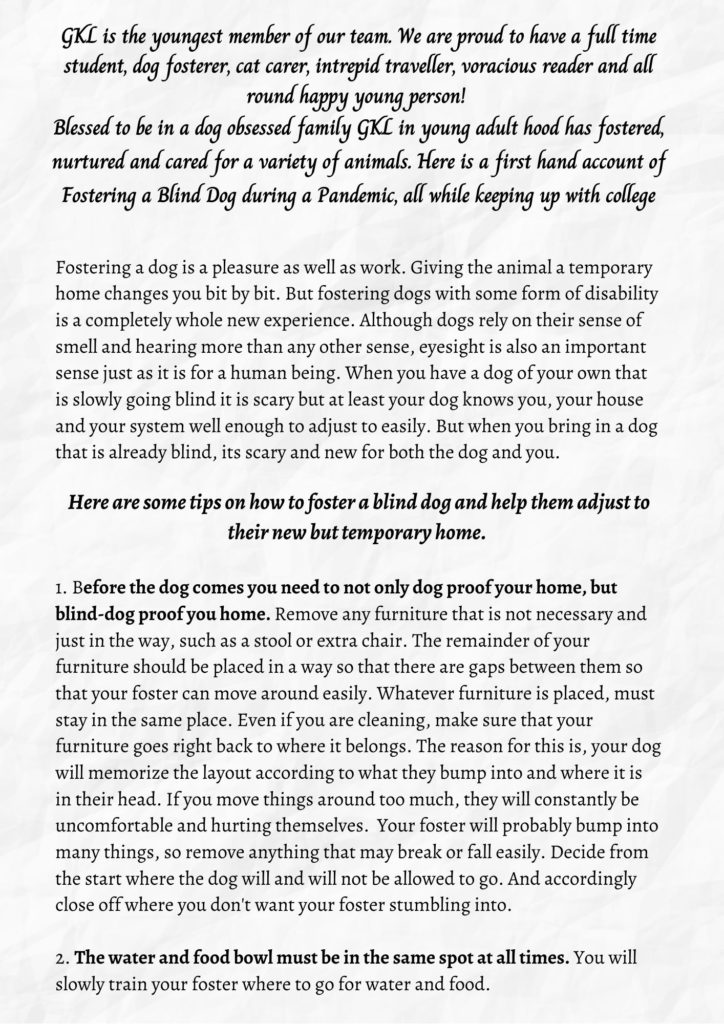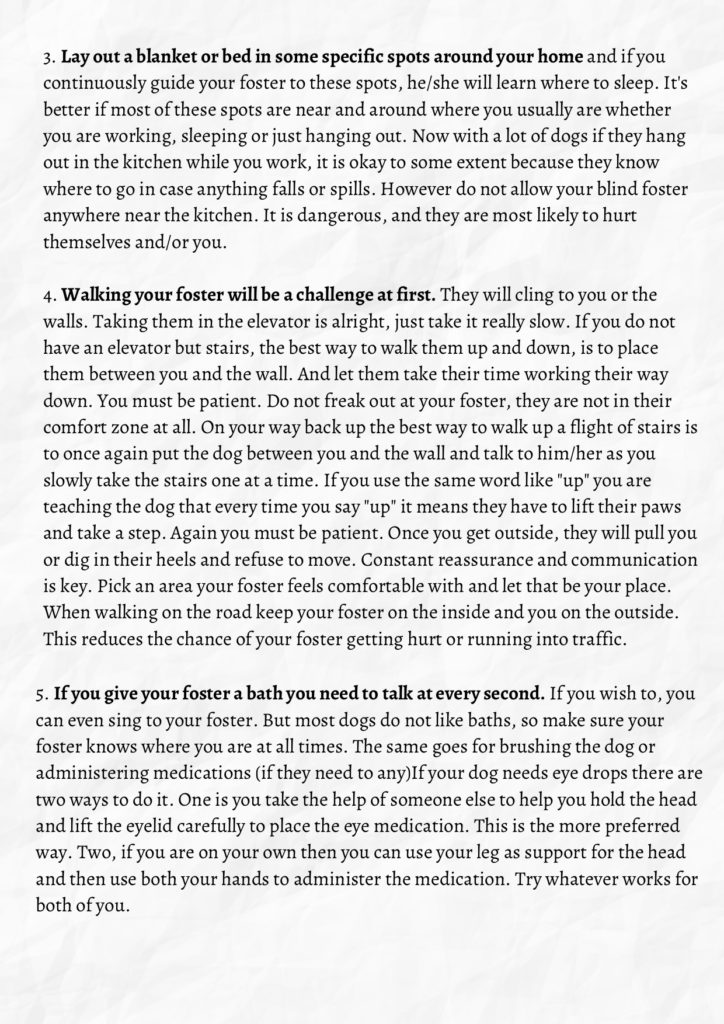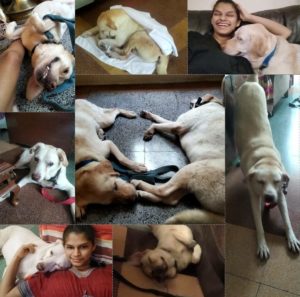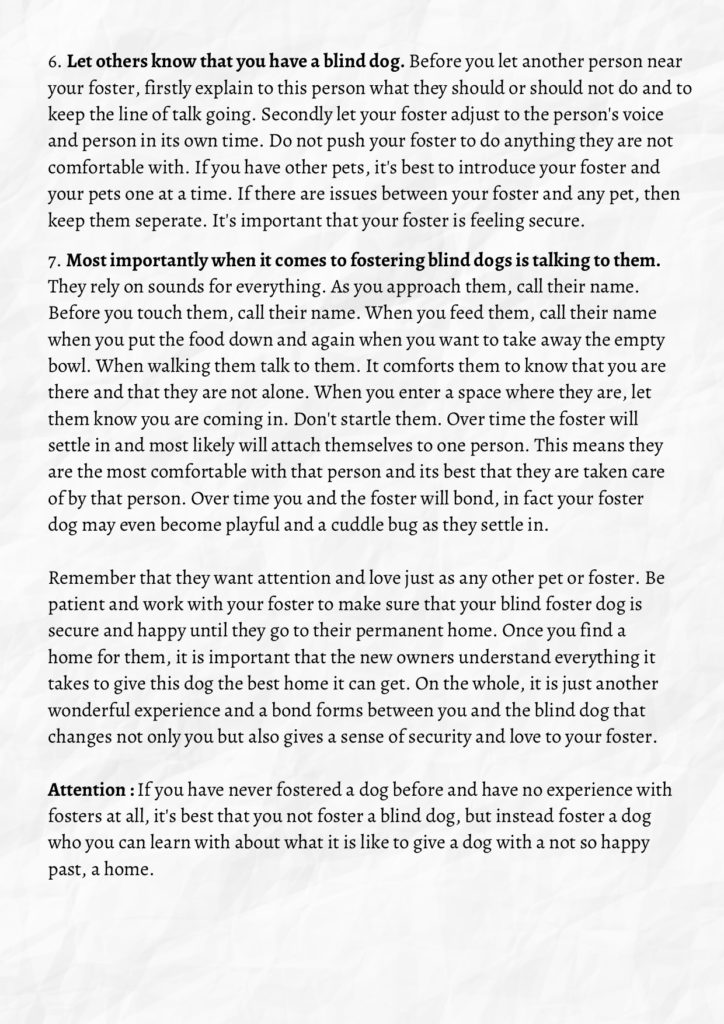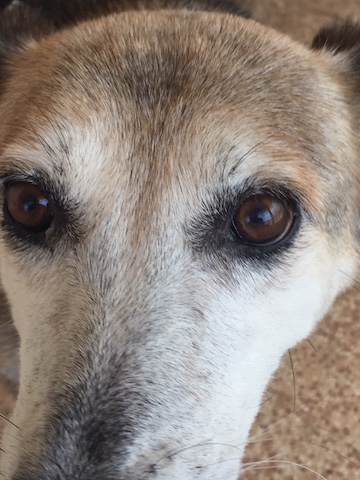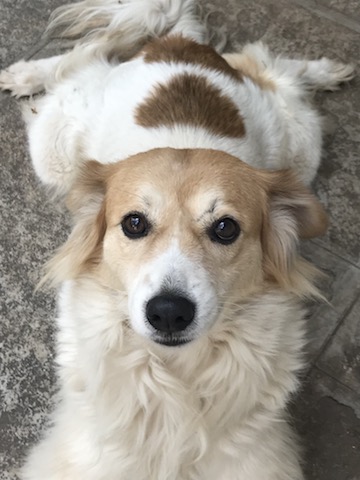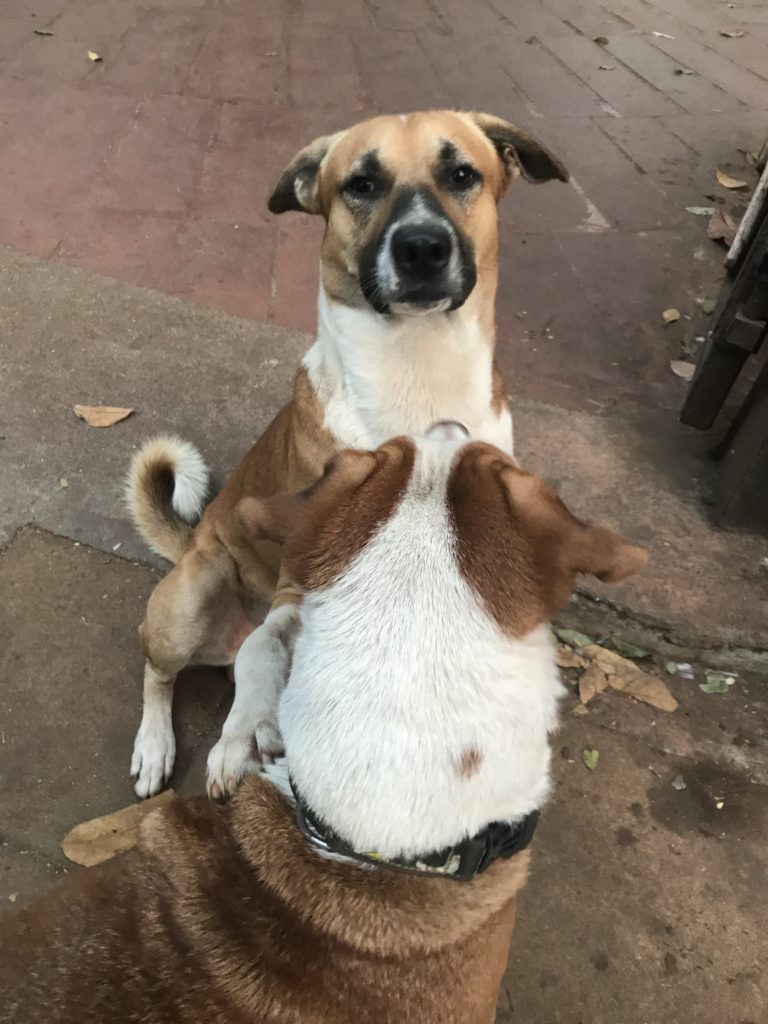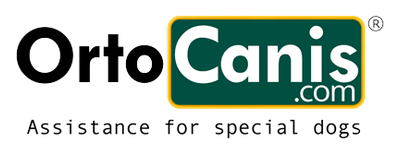Loss of vision is a daunting prospect. Blindness in dogs may invoke extreme responses from pet owners from complete despair to over reactions of euthanising blind dogs. The truth is dogs can and do adjust to numerous instances of ill health and even blindness. As owners and caregivers, it is vital not to project your own feelings of helplessness onto your pet. Do not believe for a moment that your dog shares your sense of helplessness at their loss of vision. Dogs have a strong emotional capacity to deal with new situations.
Blindness in dogs, of any age, requires a commitment from their owner and family to care for and provide a safe environment and routine. Dogs with failing eye sight do not despair, because their other senses sharpen. Dogs are known for their heightened sense of smell. This helps them adjust to loss of vision quicker than you’d imagine.
Smell, sound and sight, that is the order of importance for your dogs senses. So while sight is important, it is not imperative.
Fostering a blind dog is all at once, the most challenging and rewarding dog care activity. Fostering is a calling, you don’t do it because you are bored, or in lock down and terrified of spending time with yourself, or worse, an over dose of family time!
Dogs come in all shapes and sizes, bred for a variety of purposes and reasons over hundreds of years their original ‘jobs’ may have disappeared but their structure for most breeds is consistent. The breeds modified often to the determent of their health, to cater to our aesthetic whims are the real sufferers.
Pugs especially with their ‘bulging eyes’ went through their darling phase with fad dog buyers and owners. Brachycephalic breeds suffer a multitude of health problems due to their squashed cranium. Their eyes are particularly vulnerable as they quite literally protrude out of their skulls. Pugs are especially prone to accidental eye injuries.
Blindness in dogs may be caused by a number of reasons. Sudden acquired retinal degeneration syndrome (SARDS) versus neurological disease (ND) blindness due to ageing maybe an easier condition for some pet owners to accept. (Find a list of conditions and breeds prone at the end of this article)
How to help your blind dog at home?
- Do not move furniture frequently, or not at all if you can help it.
- Help them get the “lay of the land” patiently let the dog explore and determine the location of their favourite spots
- If you have the space maybe put out one or two extra water bowls so they have easy access to water and do not need to navigate the entire house. Maintain a consistent spot for food. This makes the area easier to keep clean.
- If they have a favourite low sofa or even dog bed some dogs as they loose vision in old age may tumble off! Rails on the side along with a ramp (gradual incline) will help them climb onto the sofa and not fall off.
- Ask an expert or trainer to help you clicker train your blind dog. They respond well to voice commands and will be able to learn new commands. The first and most important commands will be one to stop the dog getting into a dangerous situation. A command that makes the dog stop almost instantly an action that may harm them like getting entangled in an electric wire.
- Use Scent to help your dog navigate the house. For example if you use lavender for the area near his/her bed. You may rose for the front door, that way the dog knows different areas of the home by its scent.
- Walk your dog/ foster dog around the house, help them to get the layout of the home. Even for a dog who has lived in the same home for a while, loss of vision becomes a challenge. As the dog now has to memorise the layout of furniture and which will cause the worst injury.
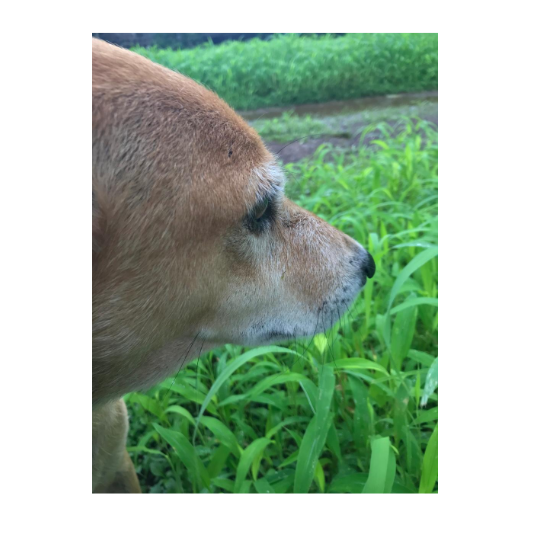
How to help your blind dog exercise
Blind dogs who live in a family with access to a private garden or back yard, are lucky. They will be able to adjust relatively quickly as long there is a set path for them to enter and exit the home.
If you have steps leading down to a lawn or garden you will need to modify them with a ramp. A ramp works for dogs like it works for people making it a gentle progression to navigate height. Blind dogs may hesitate when they have to negotiate stairs no matter the height or number. Ramps give them the confidence to navigate stairs independently.
If you have multiple pets in your home, take the time to help them adjust. Pay attention to the emotional needs of all your pets.
Fostering a blind dog, makes a tough job tougher. You are now responsible for the emotional and physical well being of a dog which may have been abandoned, or surrendered by an owner who did not have the capacity to care for a special needs dog.
DEVICES to help your blind dog
Halo – A curved device typically fitted on your dog with a harness which protects the face and eyes if your dog collides with an object.
Whiskers – these fantastic inventions help your dog with “fake whiskers” which act as buffers to stop them from bumping into objects.
Bells help your old or blind dog to find or follow you. Bells will help them identify a direction. Attach a bell to your dogs collar as they age as well as young pups can be a life saver. The bell warns snakes and other critters of an animal approaching which helps both to avoid an unnecessary conflict.
Pad or cover sharp corners and edges on furniture. This is dependent on the height and size of each individual dog and situation
Cover your swimming pool, if you have a swimming pool- a solid cover over the pool, or fence it
Stairs in the home or leading out to a garden should ideally be fitted with a ramp
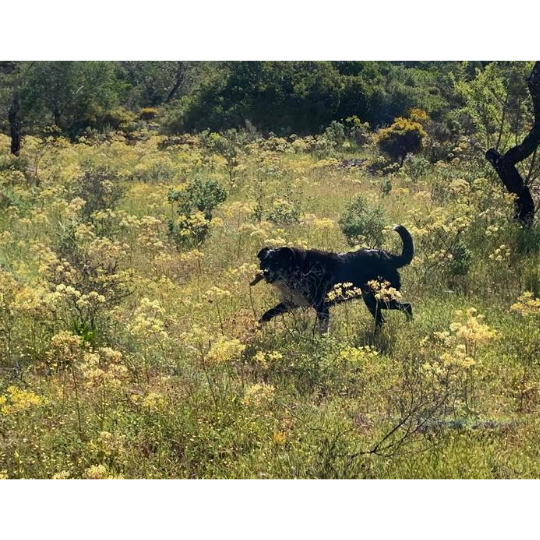
Fostering a dog or cat is essentially temporary custody. Be mindful of the fact that the animal you foster today, becomes a member of a family tomorrow. Lock down fosters have provided relief and entertainment to numerous families, but amateur foster homes do more harm than good to a dogs future. Good foster homes know they are responsible to teach dogs to be productive, well mannered members of a family and society.
Tales in Dog Fostering by GKL
